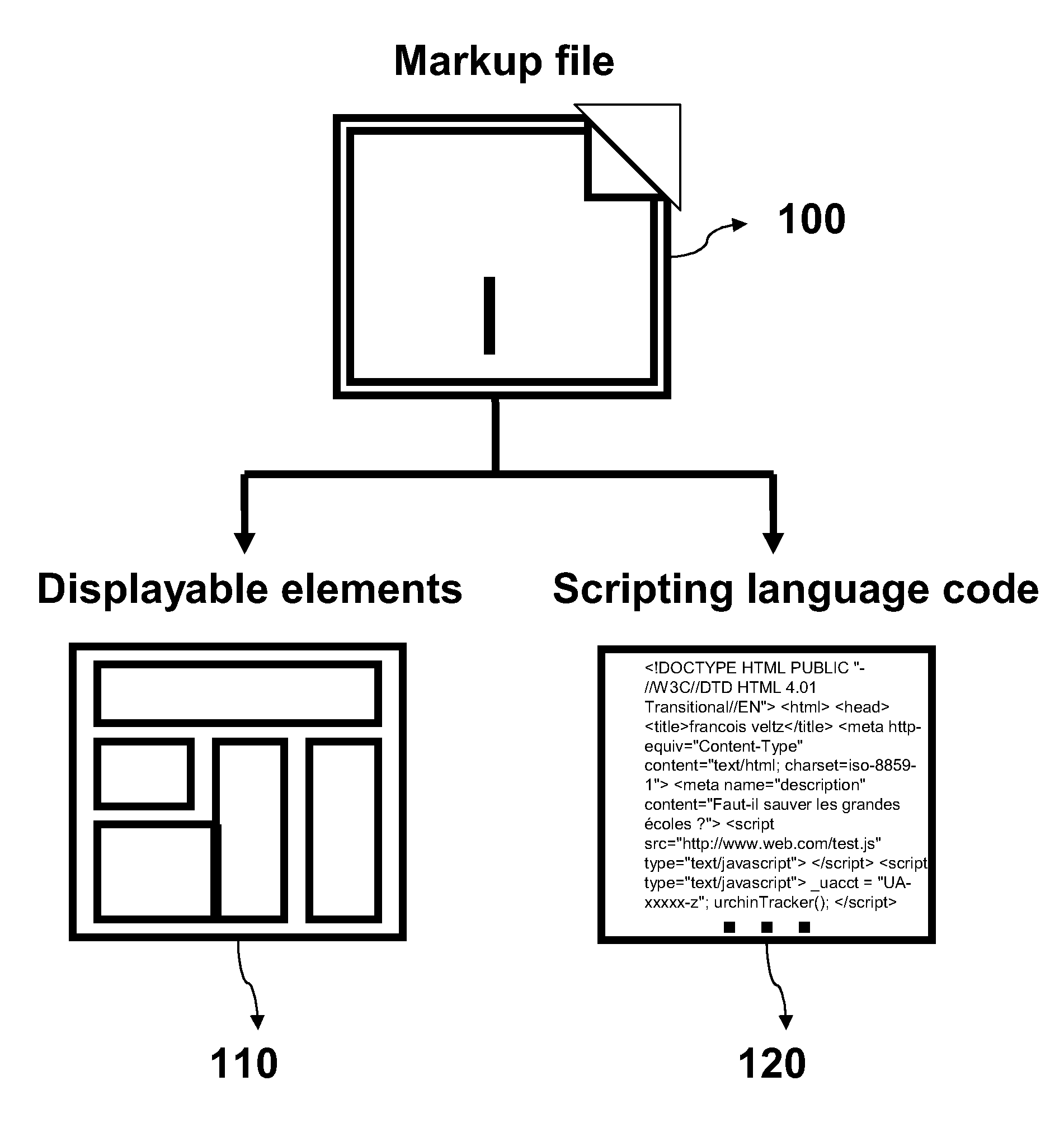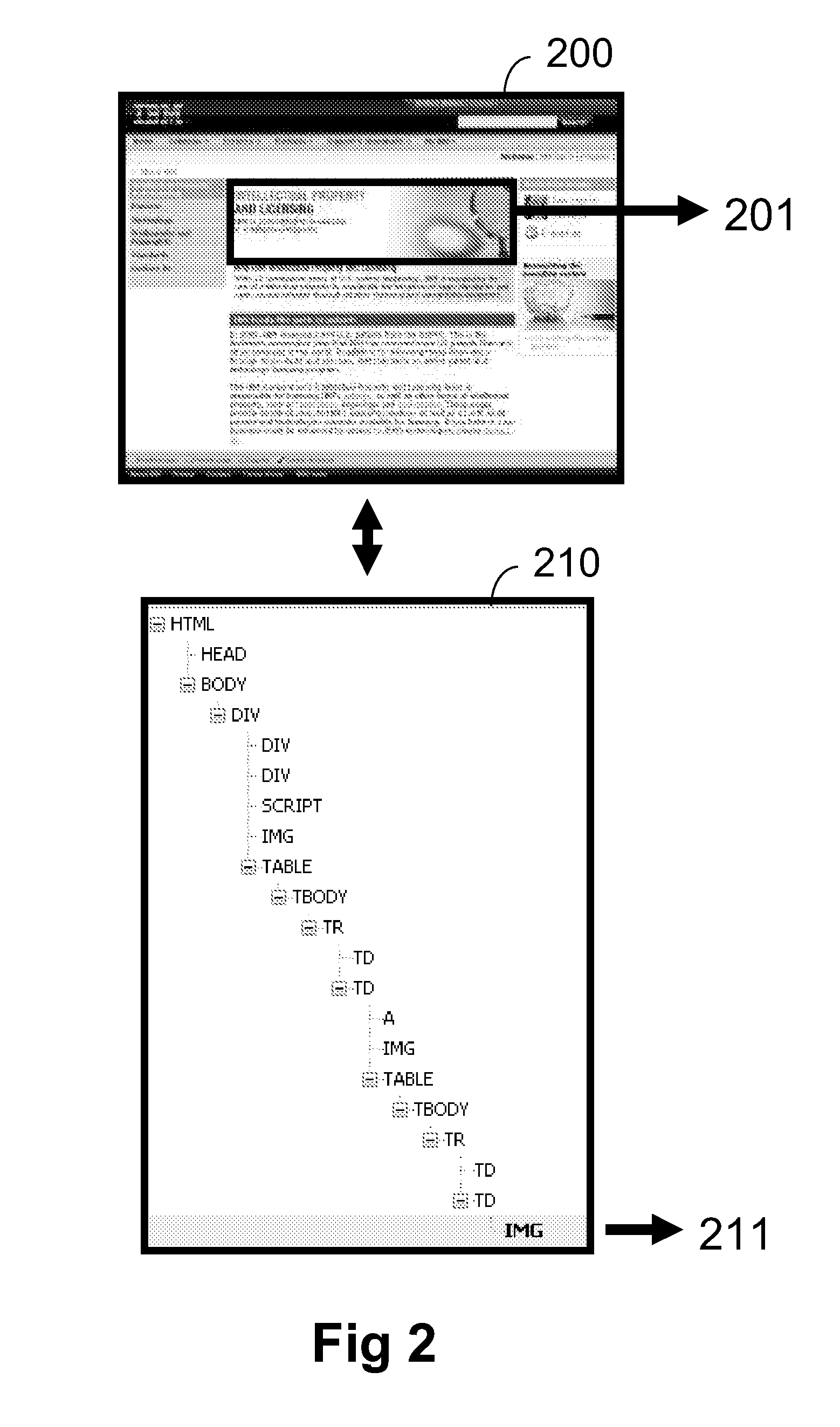Method and system to selectively secure the display of advertisements on web browsers
a web browser and selective security technology, applied in the field of data processing, can solve the problems of increasing consumer fatigue of intrusive marketing, putting this mainstream source of revenue at risk, and huge losses for companies whose business models rely on advertisements, so as to avoid malicious code execution, and avoid the effect of execution
- Summary
- Abstract
- Description
- Claims
- Application Information
AI Technical Summary
Benefits of technology
Problems solved by technology
Method used
Image
Examples
Embodiment Construction
[0032]To facilitate description, any numeral identifying an element in one figure will represent the same element in any other figure.
[0033]The following text presents a detailed embodiment in the context of adblocking but it is to be understood that it is not limited to this specific domain and that it extends equally to domains such as computer security (malicious code removal, anti-crawling tool, etc.), internet accessibility, content personalization and edition, data conversion, Software as a Service delivery, Digital Rights Management, Trusted Computing, etc.
[0034]As a definition, a document object model (DOM) expression is to be understood as a way to refer to a (or the) logical structure of a document. THE expression can thus be replaced by expressions such as “logical structure” or “hierarchical structure” or “structure”. The “DOM tree” can be read “tree of the logical structure” for example. For the sake of conciseness and clarity, expressions such as “DOM” and “DOM tree” a...
PUM
 Login to View More
Login to View More Abstract
Description
Claims
Application Information
 Login to View More
Login to View More - R&D
- Intellectual Property
- Life Sciences
- Materials
- Tech Scout
- Unparalleled Data Quality
- Higher Quality Content
- 60% Fewer Hallucinations
Browse by: Latest US Patents, China's latest patents, Technical Efficacy Thesaurus, Application Domain, Technology Topic, Popular Technical Reports.
© 2025 PatSnap. All rights reserved.Legal|Privacy policy|Modern Slavery Act Transparency Statement|Sitemap|About US| Contact US: help@patsnap.com



